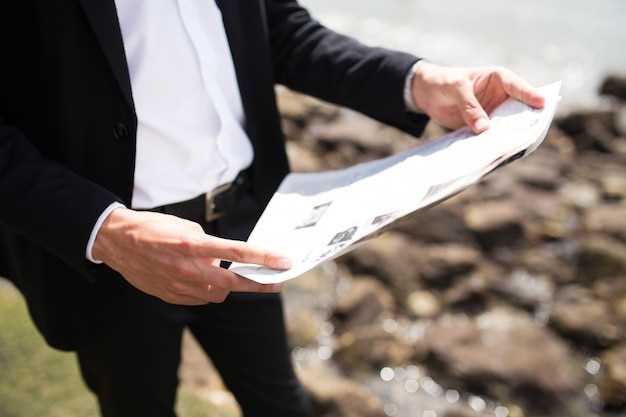
When undertaking a restoration project for an exhibition, meticulous documentation is paramount. The process of restoring artifacts not only requires technical skill but also a clear and organized approach to recording each phase of your work. By maintaining a comprehensive log of your restoration activities, you can effectively communicate the history, methods, and techniques you’ve employed throughout your project.
Building a thorough documentation system enhances the overall credibility of your exhibition. It allows you to showcase not only the end result but also the intricate journey of restoration, making it a valuable educational tool for your audience. Each entry in your log can provide insights into the challenges faced, the decisions made, and the solutions implemented, all of which contribute to a deeper appreciation of the restored pieces.
Moreover, the process of precise documentation is essential for future references and for other professionals in the field. By creating a detailed log of your restoration process, you not only preserve the integrity of the artifacts but also build a foundation for ongoing discussions and research in conservation. This structured approach is vital for ensuring that successful techniques are shared, learned from, and built upon for the benefit of the entire community.
Creating a Comprehensive Project Log

Documenting the restoration process through a detailed project log is essential for ensuring transparency, accountability, and clarity. A well-maintained journal not only records the necessary actions taken during restorations but also serves as a valuable resource for future projects and exhibitions.
To start, your project log should have a clear structure that allows for easy navigation and reference. Begin by setting aside dedicated time to update your journal regularly. This commitment will help you capture important details as they occur rather than relying on memory later. Each entry should include the date, a brief description of the task performed, and any observations made during the process.
Detailed Descriptions: For each phase of the restoration project, describe the techniques used, materials selected, and challenges faced. This will provide valuable insights into your decision-making processes and the methodologies employed, aiding both current and future restoration efforts.
Visual Documentation: Incorporate photographs, sketches, or diagrams alongside your written entries. Visual aids not only enhance your project log but also serve as a reference point for the condition of the object before, during, and after restoration. Ensuring quality images accompany your textual entries can enrich the narrative and provide context.
Reflections and Analysis: Include a section in your log for personal reflections. Analyze what worked well, what challenges you encountered, and how you overcame them. This critical thinking aspect will refine your approach in future projects and contribute to your growth as a conservator.
Final Outcomes: At the completion of the restoration project, summarize the results clearly. Highlight the objectives you achieved, the impact on the original piece, and any lessons learned through the process. This summary can also serve as an essential part of your exhibition materials, offering viewers insight into the care and effort involved in the restoration.
By maintaining a comprehensive project log, you ensure that your restoration efforts are well-documented, facilitating both academic inquiry and public understanding. A well-prepared journal becomes an invaluable asset, not just for individual projects, but also for the broader field of restoration and conservation.
Building an Organized Journal for Each Phase

Documenting your restoration project is essential for tracking progress and ensuring a successful outcome. A well-structured journal serves as a valuable resource throughout each phase, from initial planning to final presentation. To build an organized journal, follow these guidelines:
1. Define Sections for Each Phase
Your journal should include distinct sections for planning, execution, and evaluation. This separation allows for quick reference and a clear overview of the project. For example, the planning phase could contain sketches, material lists, and timelines, while the execution section might detail step-by-step processes and challenges faced.
2. Utilize Clear Headings and Subheadings
Each entry should start with a clear heading indicating the date and phase of the restoration. Use subheadings to categorize specific tasks or issues encountered, making it easier to navigate the journal later. This organization will streamline your documentation and make finding information straightforward.
3. Include Visual Aids
Integrating photographs, diagrams, and sketches throughout your journal enhances understanding of each phase. Visuals not only complement the text but also provide evidence of progress and decision-making. Ensure to label each visual clearly, referencing the corresponding task or phase.
4. Maintain a Chronological Order
Chronology matters in a restoration project. Document events in the order they happen to create a clear timeline of progress. This approach not only helps in understanding how the project evolved, but it can also be beneficial for future restorations or exhibitions.
5. Reflect on Each Phase
At the end of each phase, take the time to reflect on what you learned. Include notes on what worked well and what could be improved in future projects. These reflections will provide insight and help build your expertise in restoration.
By carefully constructing your journal with these organized sections and practices, you will not only foresee challenges but also create a comprehensive record of your restoration journey. This documentation will be invaluable for exhibitions, allowing others to appreciate the complexity and artistry of your work.
Using Visual Documentation to Enhance Understanding
Visual documentation plays a crucial role in the restoration process of artifacts intended for exhibitions. By incorporating images and videos into a log, restorers can create a comprehensive record that illustrates every step of the project.
When maintaining a journal of the restoration work, it is essential to capture high-quality visuals that depict the condition of the artifact before, during, and after the restoration. These images not only provide a tangible representation of the work but also serve to enhance audience understanding of the complexities involved in the restoration process.
Incorporating visual elements into your restoration log allows for a deeper engagement with your audience. Visitors to exhibitions can witness the transformation of the artifact through a carefully curated selection of photographs or time-lapse videos that showcase the techniques and materials utilized. This not only educates them about the meticulous nature of preservation but also fosters a greater appreciation for the craftsmanship involved.
Furthermore, a well-documented visual history can aid in making informed decisions in future projects. By reflecting on previous restorations captured in a journal, restorers can analyze what methods yielded the best results or what pitfalls to avoid in upcoming work.
In conclusion, leveraging visual documentation enriches the storytelling aspect of any restoration project, bridging the gap between technical processes and visitor understanding. It transforms a simple exhibition into an informative and interactive experience that celebrates both the artifact and the art of restoration.


